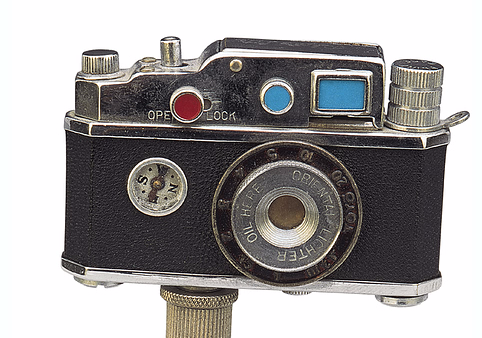|
You may have seen the recent buzz in the news about the criminalization of citizen science... a recent opinion piece in Slate magazine indicated that a new Wyoming law makes collecting data like digital photos on public lands illegal. The piece did create a stir, though more recent publications have shown this original piece to be a bit of an overstatement.
Regardless - citizen science is making it into the news more frequently! Citizen science experts, including Andrea Wiggins, David Bonter, and Elizabeth MacDonald, as well as citizen scientist Sharman Apt Russell recently appeared on the Diane Rehm show to illustrate the incredible contributions that are made to science by volunteers such as yourself. This show also created a stir - though thankfully, it had a very positive spin!
And speaking of our friend Sharman Apt Russell...she recently authored a post for PLoS Blogs, which describes her experiences using Nature's Notebook. I got more than a chuckle out of her description of our protocols as "reading like the dreaded word problem in a math class"! I wonder if some of you might agree with her...
Have a great spring!
|
|
What your data are telling us
|
|

Your observations contribute to a national global change indicator
As part of the ongoing National Climate Assessment, the US Global Change and Research Program released the first 14 indicators of climate change earlier this month. Among these is the Start of Spring indicator, which represents whether spring is early or late across the country in a particular year. The Start of Spring indicator is calculated and validated using data and models curated by the USA-NPN, including observations of plant leaf-out and flowering collected via Nature's Notebook.
|
What's new at Nature's Notebook and USA-NPN
|
Revamped "how to" instructions for Nature's Notebook
Looking for a refresher on using Nature's Notebook? We've completely revamped our "how to get started" materials. The new online course, which takes approximately 45 minutes to complete, includes videos, interactive quizzes, and more.
|

Nature's Notebook webinars - join us!
We have a great lineup of webinars planned for you in 2015. The next ones on the calendar are:- Jun 1: Springcasting Part II: How did we do? What have we learned? And what's next? Dr. Toby Ault, researcher at Cornell University and lead on the springcasting effort, will summarize for us how spring of 2015 unfolded, and how well the springcasting effort performed. Register for webinar
- Jun 16: How are your data being used? The ways in which data collected through Nature's Notebook are being used is growing nearly by the day. Join us as we walk through a range of real-world applications for these observations, including research, agriculture, resource management, and leaf-peeping.
- Jul 14: Unveiling the new USA-NPN data visualization tool. Curious to see how your observations compare to those in your region? How about to previous years? Does the timing of phenological events in your region seem to be driven by temperature, precipitation, daylength, latitude, or elevation? You can explore all of these patterns and more in the new USA-NPN data visualization tool!
Webinars take place at 11am Pacific (and AZ), 12pm Mountain, 1pm Central, 2pm Eastern. Recordings of all webinars are available for viewing on the USA-NPN YouTube page.
|
 |
|
Recent happenings in the field
|
USA-NPN Co-founder interviewed on WUWM
Want to hear even more about how the observations that you submit to
Nature's Notebook have direct utility to everyday life? Dr. Mark Schwartz, professor of Geography of University of Wisconsin-Milwaukee and USA-NPN co-founder, created models of the start of spring, called the spring indices, using observations of plant phenology. Hear Dr. Schwartz describe the models as well as their applications in agriculture, wildfire prevention, gardening, and more.
|
| Nature's Notebook Nuggets |

The challenge of teeny, tiny flowers
Teeny, tiny flowers are often described as inconspicuous flowers, and they can be hard to see and interpret. Knowing whether these flowers are "open" becomes easier after you get to know and understand the structure of the flowers for your plant species. And when it comes to counting them, pay attention to the special instructions in the Nature's Notebook phenophase definition -- it will tell you whether to count the flowers individually or in groups, and how to estimate the percent of flowers that are open.
|
|
More ways to get involved
|

We're hiring - join our team!
The USA-NPN is looking for an outstanding programmer to help advance the Network's citizen science driven research. You'll work in a relaxed and supportive environment where you'll focus on adding new features to our web infrastructure and database, help meet the ever growing needs of our expanding user base and develop valuable new data products to be used by researchers from across the country - all stemming from the USA-NPN's Nature's Notebook world-class plant and animal phenology program.
Apply at University of Arizona's CareerTrack under job number 58323.
View Posting »
|

Landscape: say "cheese!" this weekend
For the third consecutive year, the Southern Climate Impacts Planning Program ( SCIPP), CoCoRaHS, and the Earth Observation and Modeling Facility at Oklahoma University are conducting a Field Photo Weekend, this weekend - May 23-25. They are asking interested folks to photograph the landscape and submit pictures to their archive, to support an assessment of the landscape.
|
|
|
|
|